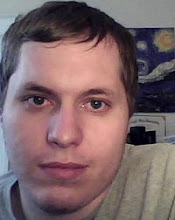 This past week, I watched a fascinating TED Talk from cosmologist Sean Carroll. The question he poses is one that has puzzled scientists, philosophers, and theologians for millennia: Why does our orderly universe exist at all? The second law of thermodynamics states that entropy (disorder) tends to increase over time. This is intuitive to most of us; it’s easy to break an egg, but difficult to put a broken egg back together, because there are far more arrangements in which the pieces of the egg can be shattered than unbroken. As a result, things tend toward more chaos and disorder. But why was the universe ever orderly to begin with?
This past week, I watched a fascinating TED Talk from cosmologist Sean Carroll. The question he poses is one that has puzzled scientists, philosophers, and theologians for millennia: Why does our orderly universe exist at all? The second law of thermodynamics states that entropy (disorder) tends to increase over time. This is intuitive to most of us; it’s easy to break an egg, but difficult to put a broken egg back together, because there are far more arrangements in which the pieces of the egg can be shattered than unbroken. As a result, things tend toward more chaos and disorder. But why was the universe ever orderly to begin with? Carroll does a great job demolishing the explanation which I’ve always favored, that our universe is just a fluke. Even though individual atoms move in hard-to-predict ways we can nevertheless predict the behavior of macroscopic objects. For example, the molecules in the air and ground are constantly jostling one another, moving in every possible direction. But we don’t expect them to spontaneously arrange themselves into a car, because the probability of the molecules simultaneously moving into the correct position is extremely unlikely. But over a long enough period of time (vastly longer than the age of the universe) it will eventually happen by pure chance.
This same argument could be scaled up to the universe itself. Quantum mechanics indicates that particles are constantly popping in and out of existence at random. If you wait for an unimaginably long time, all of the particles that make up our universe will spontaneously pop into existence out of the nothingness and assemble themselves in an orderly way, in a random quantum fluctuation. Many have speculated that such a fluctuation caused the Big Bang. The length of time we would have to wait for such an event to occur is called the Poincarre Recurrence Time, and is estimated to be on the order of 10^10^10^10^10^1.1 years. I’ve always been fond of this idea, and it seems easy to invoke the Anthropic Principle here: Conscious observers will only be able to marvel over their own existence during those rare periods of time when the universe is in a low-entropy state by pure chance. But as Carroll points out (using an argument originally made by Ludwig Boltzmann over a hundred years ago), that isn’t necessarily the case. It would be far easier for an individual brain to form from a quantum fluctuation, than an entire universe with hundreds of billions of galaxies. If our existence was a fluke of an infinitesimally unlikely quantum fluctuation, we would predict that we should be lonely Boltzmann Brains floating through empty space, rather than inhabitants of an enormously complex universe. Since we do indeed live in a complex universe, Carroll therefore concludes that our universe is not merely a random quantum fluctuation.
But if the Big Bang wasn’t merely a freak random occurrence, what caused it? Unfortunately, neither physicists nor philosophers have a solid answer for this question. Carroll suspects that there must be a multiverse, in which unknown laws of nature occasionally give rise to low-entropy universes such as our own. He cites the work of Lee Smolin, who proposed the idea of the fecund universe, in which a Big Bang occurs at the singularity of a black hole and a new universe is created. This would solve the Boltzmann Brain paradox, because universes would constantly be spawning new universes through the laws of nature, but randomly-occurring Boltzmann Brains would still be unfathomably rare.
Another possibility is that our understanding of entropy is incomplete; perhaps our universe is indeed a random quantum fluctuation, but for reasons we don’t understand it’s easier for entire universes which can eventually produce conscious observers to randomly fluctuate into existence, than it is for Boltzmann Brains to do so. Perhaps the laws that govern the creation of universes tend to give rise to things like our own universe rather than Boltzmann Brains. Perhaps our universe is merely a holographic representation of a two-dimensional universe with different laws of physics than those we observe, and therefore entropy doesn’t apply at all. Perhaps our world is a simulated reality, and the simulators find complex worlds more interesting than lone Boltzmann Brains. Or perhaps we are indeed Boltzmann Brains, and for some reason don’t realize it.
Whatever the reason we live in an orderly universe, our understanding of physics is slowly making it possible to weigh the different theories to see which are the most likely. As our understanding of cosmology continues to improve, perhaps we will one day be able to understand what (if anything) caused the Big Bang. If Carroll’s multiverse theory turns out to be correct, perhaps it will vindicate the Hindu concept of cyclical creation and destruction: Universes are born, die, and are eventually reborn in different forms.
Watch the short version of Sean Carroll’s talk here. If you’re interested in the full hour-long lecture, watch it here.

Nice article on the creation, destruction and how the orderly universe is surviving while scientific theories are showing that universe should not be existed so orderly.
ReplyDelete